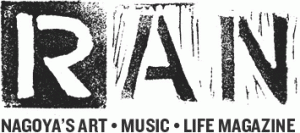by 力
In part 2 we looked at the introduction of Christianity and guns into Japan. Both had significant parts to play in the succeeding years and yet neither had a huge impact in the longer term. The unification of Japan by the subjugation of the regional clans progressed in the years 1573 to 1610 under the leadership of three very different autocratic leaders: Nobunaga, Hideyoshi and Ieyasu – all of whom are popularly regarded as heroes by the Japanese. Their contrasting characters are encapsulated in verses (senryu) that children still learn at school today:
If the cuckoo will not sing, kill it. If the cuckoo will not sing, make it sing. If the cuckoo will not sing, wait for it.These senryu correspond respectively to Nobunaga, well-known for his ruthlessness, Hideyoshi, who was regarded as resourceful and Ieyasu, who persevered.
Nobunaga entered Kyoto, the seat of power, with his army, and systematically eliminated his enemies, including hostile merchants, opposing clans and intransigent Buddhist monks, the latter through supporting Christianity. His military might was backed up by use of the arquebus, a kind of early machine gun, which had been introduced from Europe. After his death in 1582 he was succeeded by Hideyoshi, who completed the military reunification of Japan by 1590.
Hideyoshi’s final ambition was the conquest of China. However his armies were thwarted during their attempted passage through Korea in 1592 and again five years later, eventually the Japanese withdrew on his death in 1598. Prior to that he had established trading relations with Malaysia, the Philippines and Thailand. His successor, Ieyasu Tokugawa, who by 1603 had become the shogun continued foreign trade. He launched Japan’s first ocean-going European style warship that carried an embassy of officials to the Americas and Europe. However problems with Christian missionaries being a destabilising influence soon led to their exclusion from Japan and cessation of overseas trade, bringing about over two hundred years of isolationism in its wake.
The social order was based on inherited position in a feudal hierarchy with the emperor, court nobles, the shogun and daimyo (regional bureaucrats /samurai) occupying the top levels. Next were peasants, who made up 80% of the population. Craftsmen were on the third level and below them were the merchants. A number of people fell outside these categories, including tanners, butchers, executioners and entertainers. These unfortunate people had no status and were referred to as ‘hinnin’, which translates literally as ‘non-human.’
Japan’s economy was based on rice production, which was subject to 40% taxation, and forestry which came into prominence with the development of the construction industry. The social order gradually changed; the samurai took up the concept of ‘bushido’ ( the way of the warrior) and the townspeople were encouraged to aspire to their qualities of integrity, honour, loyalty, hard work and frugality. This brought about a period of growing peace and stability with a steadily improving economic situation and no outside threat.
In addition, leisure time spawned new forms of entertainment with the quest of ‘ukiyo’ (the floating world) – a search for aestheticism and elegance in everyday life. Kabuki, bunraku (puppet theatre), music and poetry all flourished. A new era in art developed with ‘ukiyo-e’ (woodblock prints). Yoshiwara became the fashionable resort in the city centre of Edo (now, Tokyo) where these new pleasures found their focus. Geisha, who incidentally in the early days were males but were soon replaced by attractive females, set the trends in fashionable clothes and accessories competing with each other for beauty and reputation. These highly fashionable women provided entertainment by singing, dancing, playing musical instruments and conversation. However, their employment contracts, the costs of rent and maintaining their wardrobes often meant that these ladies spent their entire lives paying off debts.
Not surprisingly the area became the first, officially sanctioned ‘red-light’ district.
Next time we’re going to look at the latter part of the Edo era, during which tensions built up and Japan had to once again face the outside world. In the meantime why not visit Okazaki, the birthplace of Ieyasu. A meandering river leads to the impressive castle and there are many traditional restaurants within the parkland surrounding the castle. It’s just 45 minutes by train from Nagoya station.








